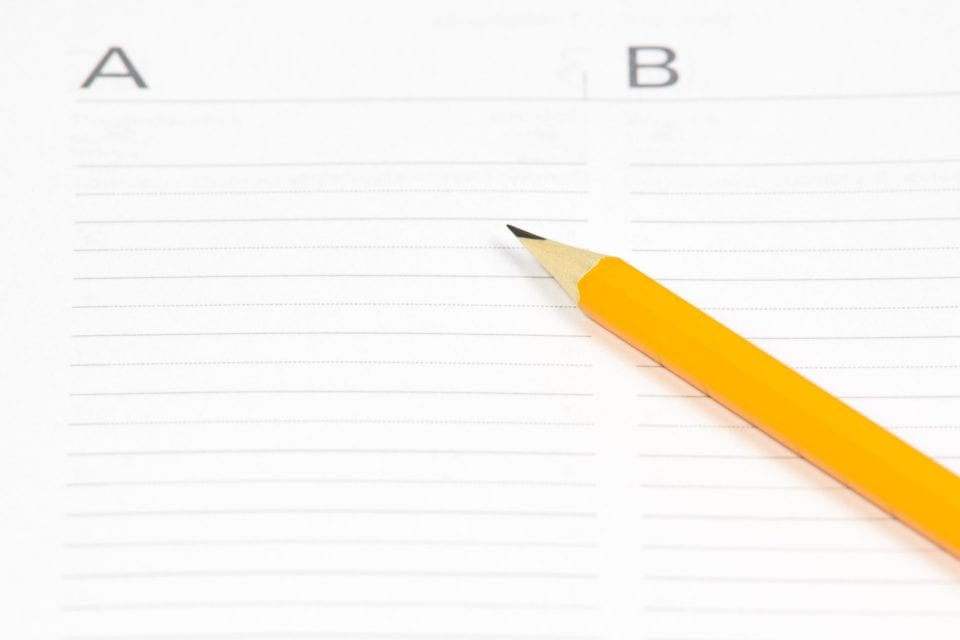While grants may masquerade as simple applications for money, successful, grant writing requires reliable research, cultivation of the grantmaker, an action-oriented, deadline based plan for successful completion, and attention to the details. Applying for grants doesn’t need to be overwhelming if you break down the simple steps along the way.
Do Your Homework, and Get a Meeting
Grantmaking organizations have limited funds and full portfolios, so if you are going to break into that portfolio you have to show that your work aligns with the funder’s objectives and goals—all while standing out amongst the crowd. This means you need to do your homework before even starting the application. Doing your homework significantly improves your chances of getting in the door, and securing an in-person meeting provides the opportunity for the funder to extend a verbal invitation to apply for a grant. For most grantmaking institutions, being invited to apply is 80% of the battle.
Here are a few good places to start your research:
- Go to the funder’s website and identify their key initiatives to see if your organization or project is a fit.
- Review their past and current grantees to see what projects have earned their investment, and to see if you offer something competitive and compelling.
- If the grantmaker does not list past grantees on their website, go to sites like GuideStar.org or Canada.grantwatch.com and review their grant list. This will give you a sense of what they fund, and at what amount, which can help you propose an amount that is more likely to get a “yes”.
- Prepare a short pitch about your organization and project that shows how you meet their giving objectives and request a meeting to discuss applying for a grant. It is best to do this by phone. If you aren’t able to speak to a person directly, send a follow-up email with your pitch; follow up in one week if you don’t hear back.
Identify the Deadline, and Schedule Incremental Internal Deadlines
You and your team are busy, and successful grant applications will require input from program staff, budget information from finance, quotes and signatures from the Executive Director or CEO, and supporting materials from the marketing team or other administrators. You will need to plan ahead to ensure you are able to obtain the necessary information from everyone involved in time. If you are a small organization, be even more rigorous in your planning as it is likely the various elements of the grant will fall to just one or two individuals.
When you’re ready to get started:
- Read through the grant in its entirety and identify all the people from whom you will need information.
- Put the grant deadline on your calendar and create incremental internal deadlines—consider co-workers and others you need information from so you are creating achievable deadlines. Be sure to communicate these internal deadlines with everyone involved upfront so there are no surprises.
- Identify the part of the grant that will be most challenging for you to complete and start with that section. Work your way back to the more manageable sections to finish, when you have less energy for the work.
- Pay attention to the requested attachments. Gathering attachments always takes longer than anticipated, and this is often left to the last minute since attachments appear at the end of the grant application. Begin working on the more complex attachments (i.e. budgets or outcomes) early on, but go ahead and gather the easier ones (i.e. tax designation letter, audit). right away and set them aside.
Answer the Question Asked and Show How You Solve Their Problem
Beware of cutting and pasting. You likely have great content written about your organization or project that you have produced before. Pulling from prior work to apply to relevant questions on the grant application is a great starting point, but when you revise your initial responses be sure you have specifically answered the questions asked. Craft your language to resonate with the funder’s style and show how your work speaks directly to their giving focus and philosophy.
Here are a few tips to consider:
- After you draft your grant application answers, let the grant sit for a day or two, and then re-approach with the question, “Did I answer the question asked?” in mind. Revise accordingly.
- Cull the grantor’s website, annual report, or strategic plan (anything you can find!) for language and key phrases that you can use to show at a granular level how your work supports their mission and vision. Do not carelessly mimic language – authenticity is critical. What do you do and what is the real and meaningful connection to their work?
- Give what they ask for and no more. They don’t want to read more; they want to read what is relevant.
- Consider how you help them achieve their goals, how partnering with you will fulfill their giving objectives, how you solve a problem for them and articulate that.
Grants bridge and formalize partnerships between those with the capacity to give back and those with the passion, programming, and talent to make front line change in the world. Grants are not obstacles, but rather opportunities for organizations to articulate a purposeful message and to show how, in the end, we are all connected in a shared desire to leverage different assets to make a lasting positive impact.
 Contact@SSutton-and-Associates.com
Contact@SSutton-and-Associates.com 420-737-921-492
420-737-921-492 410-245-0398
410-245-0398 647-969-8866
647-969-8866





 www.SSutton-and-Associates.com
www.SSutton-and-Associates.com